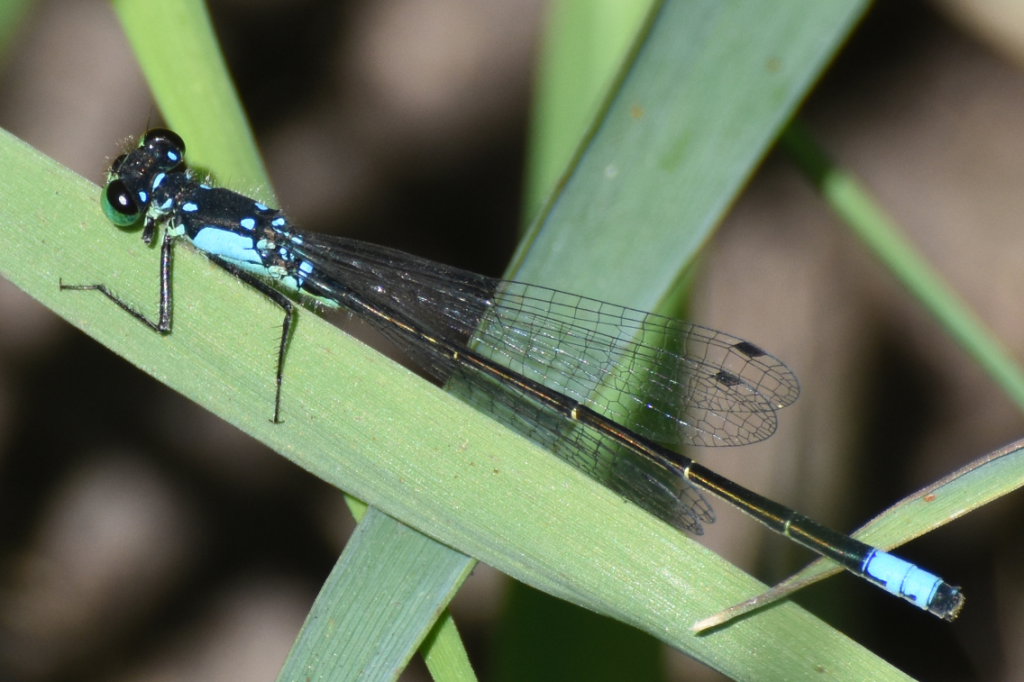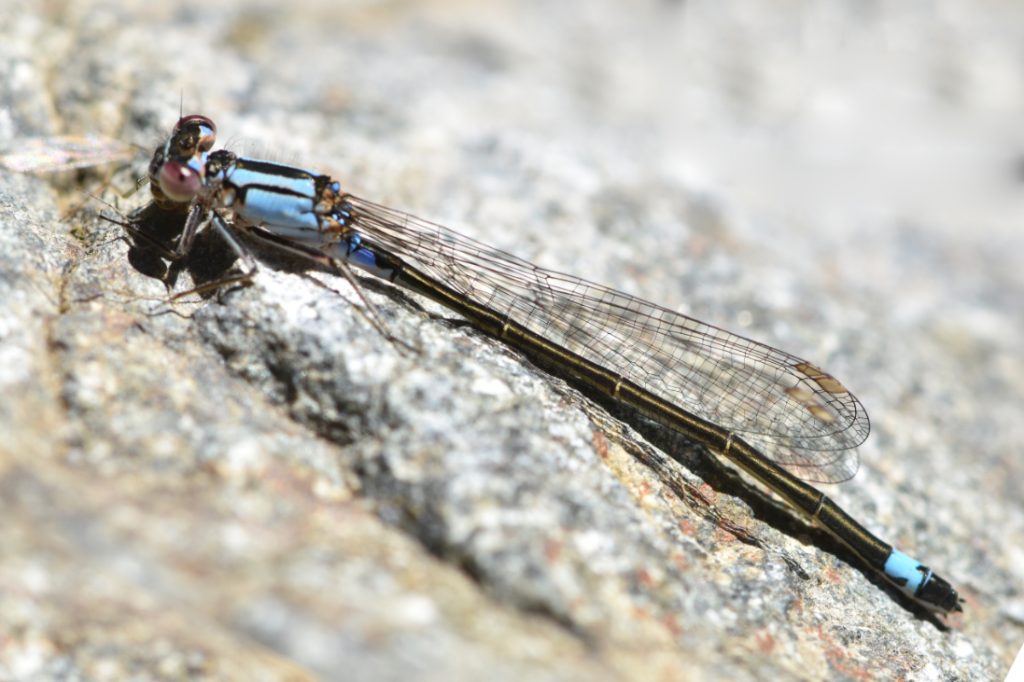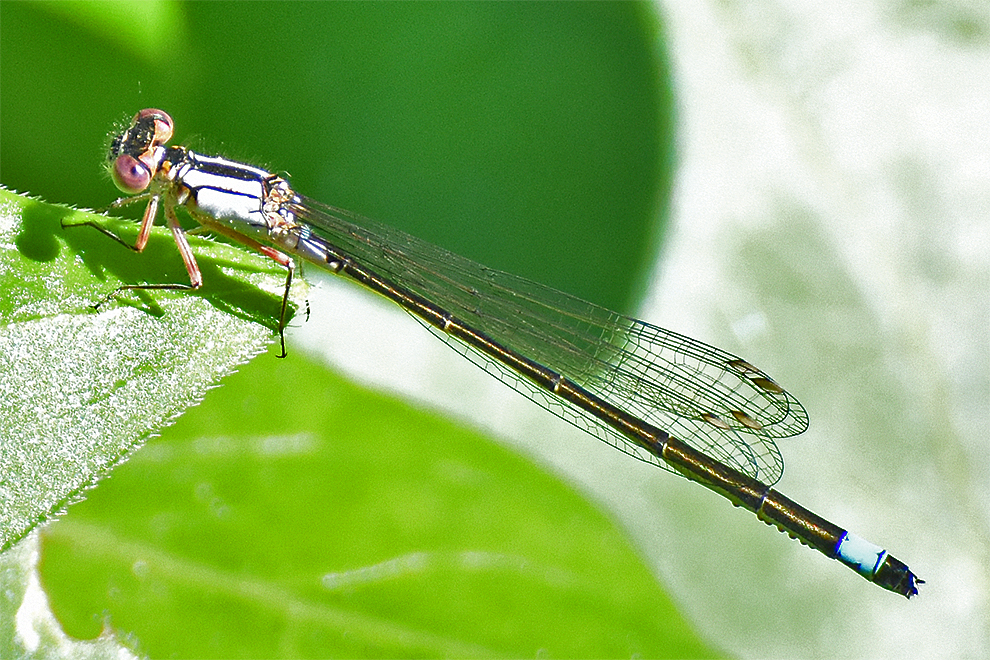
PACIFIC FORKTAIL
Ischnura cervula

Pacific forktails are small and slender damselflies with a body length of 25 to 30 mm. Their flight period is from early spring to mid fall.
Males
The males eyes are green below and black above with small blue postocular spots. The sides of the thorax are blue and the top is black with 4 small blue dots. These dots are a distinguishing feature. The abdomen is mostly black, but segments 8 and 9 are completely blue except for partial black bars low on the sides.
Females
Andromorph females appear similar to males. The 4 blue dots on the top of the abdomen may be elongated or fused into a pair of bars. Also, only segment 8 is completely blue except for the black bars. Segment 9 may be partially, but not completely blue.
Heteromorph females have similar patterns to andromorphs, but the eyes are pink and pink replaces blue on the thorax. Abdominal segments 8 and 9 are the same blue color as andromorphs.
Biology
Pacific Forktails are one of the most common odonates in our region, although being small and inconspicuous means they often go unnoticed. Immatures may travel a fair distance from water while they complete their development and then return to the water to breed. They may be seen in backyards and gardens. At Rithet’s Bog they are common in the South Wetland, especially near the shallow Fen, and in West Wetland.

Figure 1. Pacific Forktil male.

Figure 2. Pacific Forktail andromorph female.

Figure 3. Pacific Forktail heteromorph female.
